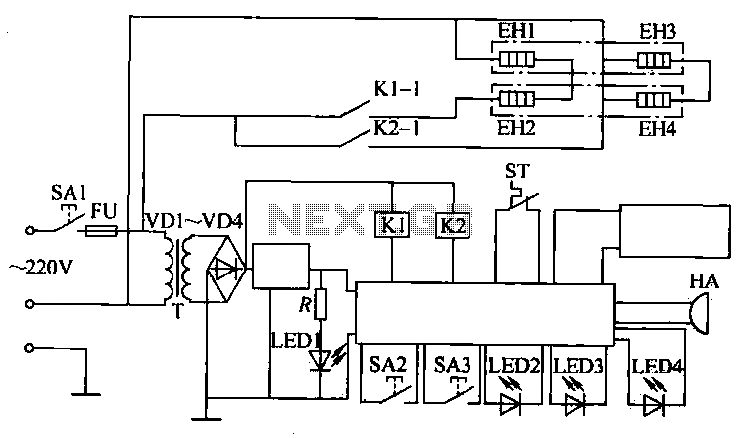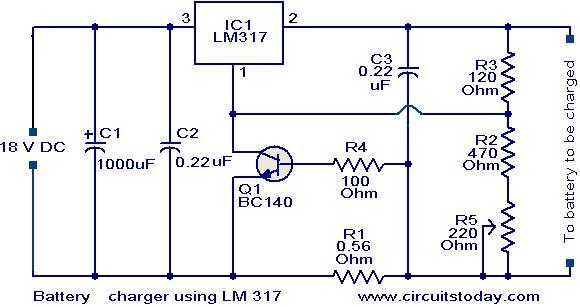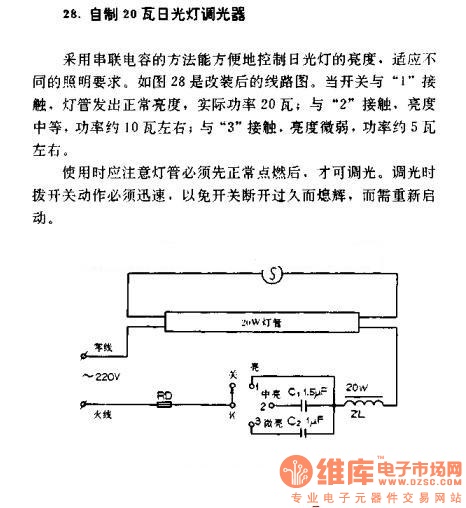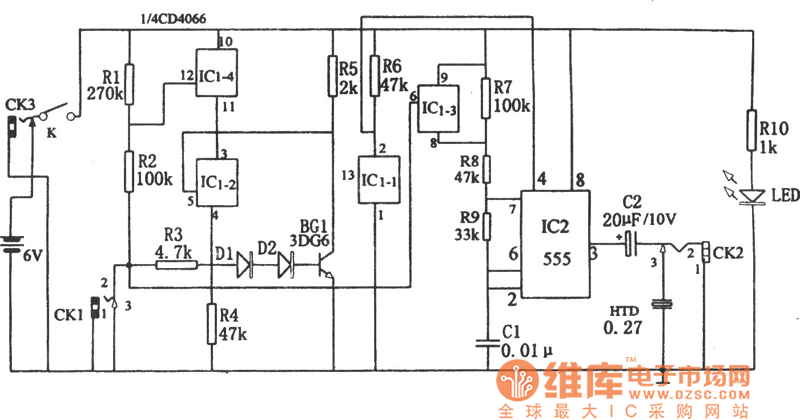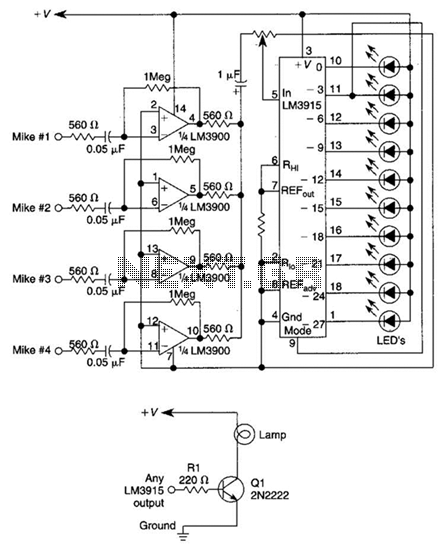
Solenoid Driving Circuit
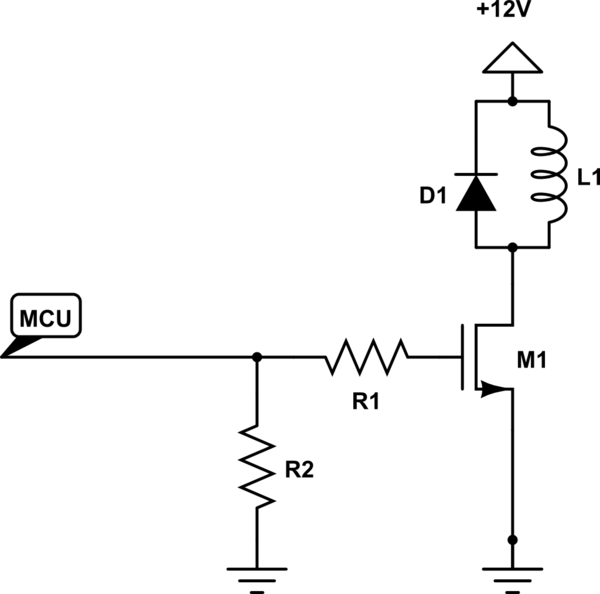
The solenoid requires a specific amount of current to generate its magnetic field. If the solenoid were a perfect inductor, the DC current could rise excessively and potentially damage other circuit components. However, solenoids inherently possess a significant amount of DC resistance to limit the current magnitude. It is advisable to place a bypass capacitor (to absorb high-frequency current pulses induced by changing the current magnitude) between ground (close to the MOSFET source) and the 12 V connection to the solenoid, which mitigates concerns about significant overshoot. The selected MOSFET has a breakdown voltage of 100 V, which is more than adequate. The MOSFET also features a non-zero on-state resistance (R_dson) of 160 mOhm, which slightly reduces the current flowing through the solenoid. Another consideration regarding R_dson is the MOSFET's power dissipation, which is negligible in this scenario (160 mOhm provided the channel is fully open). A potential issue with the circuit is that the gate voltage will be 3.3 V, while the MOSFET's gate voltage is specified between 2 and 4 V. In practice, this is acceptable because even if a suboptimal part is used, the MOSFET will still partially close and allow current to flow through its channel. However, a low gate voltage may cause the switch to operate in linear mode, where its on-state resistance is significantly higher than the guaranteed value. The gate threshold voltage is the minimum voltage at which the MOSFET begins conducting current; however, the channel current is likely insufficient to activate the solenoid. The datasheet's Figure 1 correlates gate voltage with drain current and drain-source voltage. Regarding allowed source peak current, some PWM gate drivers can support peak currents of 30 A, which, with a 10 Ohm gate resistor (R1), quickly charges the gate and minimizes the time spent in linear mode. It is assumed that the gate is driven from an MCU pin; hence, it is advisable to consult the datasheet for the allowed pin current. This current is the average current, but higher peak currents can be driven. An estimated value of 50 mA is acceptable, leading to a gate resistor value of approximately 70 Ohms for this application.
The solenoid's operation hinges on the precise management of current flow, necessitating a robust circuit design that incorporates both the solenoid's characteristics and the MOSFET's electrical parameters. The solenoid's inductive nature requires careful consideration of current limitations to prevent damage to components. The integration of a bypass capacitor is crucial, as it provides a smoothing effect for high-frequency transients, thereby protecting circuit integrity.
The choice of a MOSFET with a high breakdown voltage ensures that the circuit can handle unexpected voltage spikes without failure. The on-state resistance (R_dson) of the MOSFET, while contributing to a minor reduction in current, also plays a role in heat generation and efficiency. In this design, the power dissipation resulting from the R_dson is minimal, which is advantageous for maintaining the overall thermal performance of the circuit.
The gate drive voltage is another critical parameter, as it directly influences the MOSFET's switching behavior. Operating within the specified voltage range ensures optimal performance, but the potential for operation in linear mode due to lower gate voltages must be addressed. This condition can lead to increased power loss and reduced efficiency, making the selection of appropriate gate drive circuitry essential.
To optimize the switching performance, a PWM gate driver capable of delivering sufficient peak current is recommended. The use of a 10 Ohm gate resistor aids in rapid gate charging, thus reducing the duration of linear operation and enhancing switching efficiency. The relationship between the gate voltage, drain current, and drain-source voltage, as illustrated in the datasheet, should be referenced to ensure that the MOSFET operates within its intended parameters.
In conclusion, the design of the solenoid-driven circuit requires a comprehensive understanding of the interplay between the solenoid's inductive properties, the MOSFET's electrical characteristics, and the overall circuit dynamics. Careful selection of components, particularly in terms of voltage ratings and resistances, along with appropriate gate drive strategies, will contribute to a reliable and efficient design.The solenoid requires a certain amount of current to generate its magnetic field. If the solenoid was a perfect inductor, the DC current would rise above all means and would most likely damage other circuit components. However, solenoids inherently have a significant amount of DC resistance used to limit the current magnitude.
Provided you place a bypass capacitor (to absorb high-frequency current pulses induced by changing the current magnitude) between GND (close to the mosfet source) and the 12 V connection solenoid, you do not have to worry about a significant overshoot. Your selected mosfet has breakdown voltage of 100 V, which is certainly an overkill. The mosfet also has a non-zero on-state resistance Rdson (160 mOhm), which will slightly reduce the current through the solenoid.
Another implication of Rds is mosfet power dissipation - which is negligible in this case (160 mOhms provided the channel is fully open). 2) One problem I see with your circuit is that the gate voltage will be 3. 3 V but the MOSFETs gate voltage is specified between 2 and 4 V. In practice, it`s fine because even if you get a "bad" part, the MOSFET will still partially close and allow current current to flow through its channel.
An implication of low gate voltage is that the switch will work in the linear mode, where its on-state resistance is much higher than the guaranteed value. EDIT The gate threshold voltage is the minimum voltage where the MOSFET starts conducting current; however, the channel current would most likely not be enough to turn on the solenoid.
Look at Figure 1 in datasheet, which correlates gate voltage with drain current and drain-source voltage. allowed source peak current - some PWM gate drivers can well support 30 A peak, which (with 10 Ohm gate resistor - R1) very quickly charges the gate and thus minimizes time spent in the linear mode.
I assume you drive the gate from an MCU pin - look at the datasheet on allowed pin current. That current is, however, the average current so you can drive much more on a peak basis. I would guess that 50 mA is fine -> 3. 3V / 50 mA ~= 70 Ohms would be a good value for this application. 🔗 External reference
The solenoid's operation hinges on the precise management of current flow, necessitating a robust circuit design that incorporates both the solenoid's characteristics and the MOSFET's electrical parameters. The solenoid's inductive nature requires careful consideration of current limitations to prevent damage to components. The integration of a bypass capacitor is crucial, as it provides a smoothing effect for high-frequency transients, thereby protecting circuit integrity.
The choice of a MOSFET with a high breakdown voltage ensures that the circuit can handle unexpected voltage spikes without failure. The on-state resistance (R_dson) of the MOSFET, while contributing to a minor reduction in current, also plays a role in heat generation and efficiency. In this design, the power dissipation resulting from the R_dson is minimal, which is advantageous for maintaining the overall thermal performance of the circuit.
The gate drive voltage is another critical parameter, as it directly influences the MOSFET's switching behavior. Operating within the specified voltage range ensures optimal performance, but the potential for operation in linear mode due to lower gate voltages must be addressed. This condition can lead to increased power loss and reduced efficiency, making the selection of appropriate gate drive circuitry essential.
To optimize the switching performance, a PWM gate driver capable of delivering sufficient peak current is recommended. The use of a 10 Ohm gate resistor aids in rapid gate charging, thus reducing the duration of linear operation and enhancing switching efficiency. The relationship between the gate voltage, drain current, and drain-source voltage, as illustrated in the datasheet, should be referenced to ensure that the MOSFET operates within its intended parameters.
In conclusion, the design of the solenoid-driven circuit requires a comprehensive understanding of the interplay between the solenoid's inductive properties, the MOSFET's electrical characteristics, and the overall circuit dynamics. Careful selection of components, particularly in terms of voltage ratings and resistances, along with appropriate gate drive strategies, will contribute to a reliable and efficient design.The solenoid requires a certain amount of current to generate its magnetic field. If the solenoid was a perfect inductor, the DC current would rise above all means and would most likely damage other circuit components. However, solenoids inherently have a significant amount of DC resistance used to limit the current magnitude.
Provided you place a bypass capacitor (to absorb high-frequency current pulses induced by changing the current magnitude) between GND (close to the mosfet source) and the 12 V connection solenoid, you do not have to worry about a significant overshoot. Your selected mosfet has breakdown voltage of 100 V, which is certainly an overkill. The mosfet also has a non-zero on-state resistance Rdson (160 mOhm), which will slightly reduce the current through the solenoid.
Another implication of Rds is mosfet power dissipation - which is negligible in this case (160 mOhms provided the channel is fully open). 2) One problem I see with your circuit is that the gate voltage will be 3. 3 V but the MOSFETs gate voltage is specified between 2 and 4 V. In practice, it`s fine because even if you get a "bad" part, the MOSFET will still partially close and allow current current to flow through its channel.
An implication of low gate voltage is that the switch will work in the linear mode, where its on-state resistance is much higher than the guaranteed value. EDIT The gate threshold voltage is the minimum voltage where the MOSFET starts conducting current; however, the channel current would most likely not be enough to turn on the solenoid.
Look at Figure 1 in datasheet, which correlates gate voltage with drain current and drain-source voltage. allowed source peak current - some PWM gate drivers can well support 30 A peak, which (with 10 Ohm gate resistor - R1) very quickly charges the gate and thus minimizes time spent in the linear mode.
I assume you drive the gate from an MCU pin - look at the datasheet on allowed pin current. That current is, however, the average current so you can drive much more on a peak basis. I would guess that 50 mA is fine -> 3. 3V / 50 mA ~= 70 Ohms would be a good value for this application. 🔗 External reference
Warning: include(partials/cookie-banner.php): Failed to open stream: Permission denied in /var/www/html/nextgr/view-circuit.php on line 713
Warning: include(): Failed opening 'partials/cookie-banner.php' for inclusion (include_path='.:/usr/share/php') in /var/www/html/nextgr/view-circuit.php on line 713
